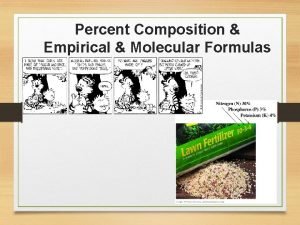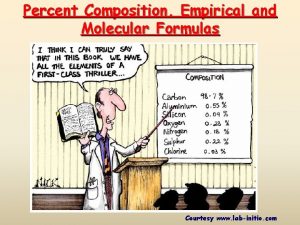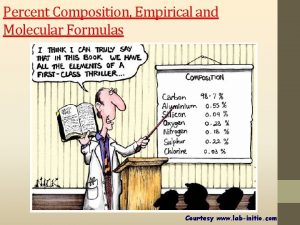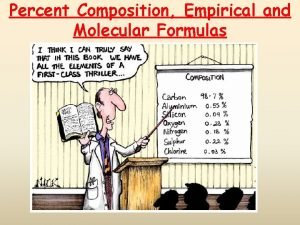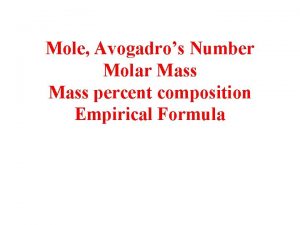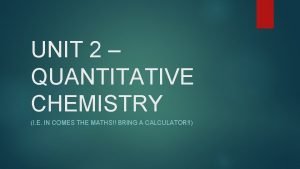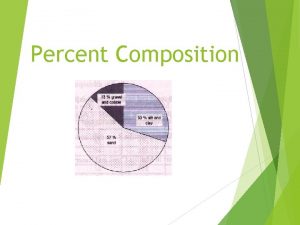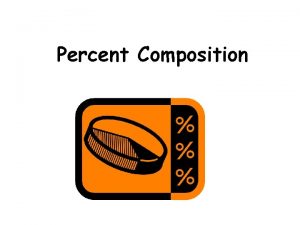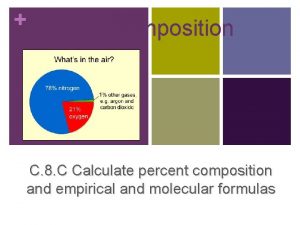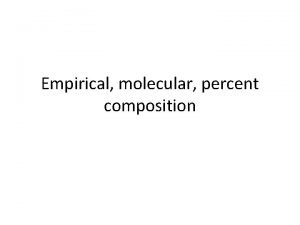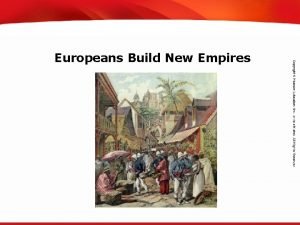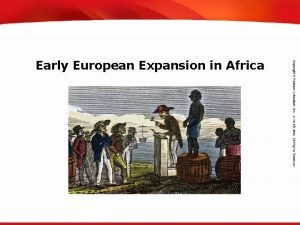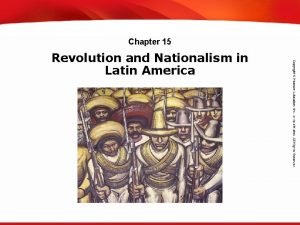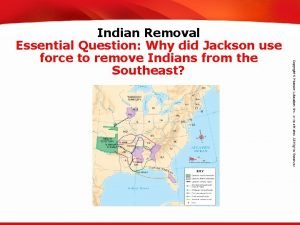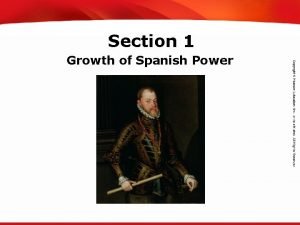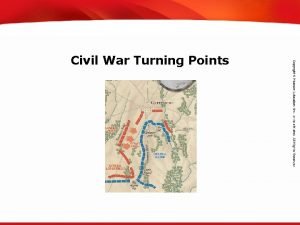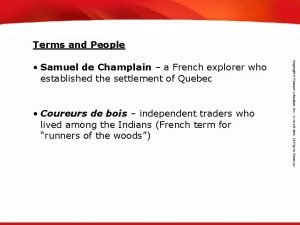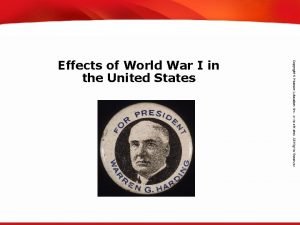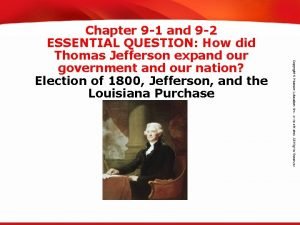TEKS 8 C Calculate percent composition and empirical
















- Slides: 16

TEKS 8 C: Calculate percent composition and empirical and molecular formulas. Civil Rights 1964– 1975

TEKS 8 C: Calculate percent composition and empirical and molecular formulas. Terms and People • Freedom Summer − 1964 effort to register African American voters in Mississippi • Fannie Lou Hamer − one of the leaders of the Mississippi Freedom Democratic Party • Voting Rights Act of 1965 − law that banned literacy tests and empowered the federal government to oversee voter registration • Twenty-fourth Amendment − constitutional amendment that banned the poll tax as a voting requirement

TEKS 8 C: Calculate percent composition and empirical and molecular formulas. Terms and People (continued) • Kerner Commission − group appointed by President Johnson to determine the causes of the race riots in American cities in the 1960 s • Malcolm X − African American radical activist • Nation of Islam − African American religious organization that advocated separation of the races • black power − a 1960 s movement that urged African Americans to use their collective political and economic power to gain equality • Black Panthers – an organization of militant African Americans founded in 1966

TEKS 8 C: Calculate percent composition and empirical and molecular formulas. What successes and challenges faced the civil rights movement after 1964? Even after the Civil Rights Act of 1964 passed, conditions did not improve drastically for most African Americans. Impatience with the slow pace of change led some African Americans to turn to more radical behavior, and sometimes violent methods. Riots occurred in many cities. After Martin Luther King, Jr. ’s assassination, more civil rights legislation was passed, but new challenges arose.

TEKS 8 C: Calculate percent composition and empirical and molecular formulas. In 1964, many African Americans were still denied the right to vote. Southern states used literacy tests, poll taxes, and intimidation to prevent African Americans from voting. The major civil rights groups sought to end this injustice.

TEKS 8 C: Calculate percent composition and empirical and molecular formulas. In the summer of 1964, the SNCC enlisted 1, 000 volunteers to help African Americans in the South register to vote. • Three campaign volunteers were murdered, but other volunteers were not deterred. • From this effort, the Mississippi Freedom Democratic party (MFDP) was formed as an alternative to the all-white state Democratic party. The campaign was known as Freedom Summer.

TEKS 8 C: Calculate percent composition and empirical and molecular formulas. A MFDP delegation traveled to the Democratic Convention in 1964 hoping to be recognized as Mississippi’s only Democratic party. MFDP member Fannie Lou Hamer testified on how she lost her home for daring to register to vote. Party officials refused to seat the MFDP but offered a compromise: two MFDP members could be at-large delegates. Neither the MFDP nor Mississippi’s regular Democratic delegation would accept the compromise.

TEKS 8 C: Calculate percent composition and empirical and molecular formulas. In March 1965, Rev. King organized a march on Selma, Alabama, to pressure Congress to pass voting rights laws. Once again, the nonviolent marchers were met with a violent response. And once again, Americans were outraged by what they saw on national television. President Johnson himself went on television and called for a strong voting rights law.

TEKS 8 C: Calculate percent composition and empirical and molecular formulas. The Voting Rights Act of 1965 was passed. • • Banned literacy tests • Empowered the federal government to oversee voter registration and elections in states that discriminated against minorities Extended to include Hispanic voters in 1975

TEKS 8 C: Calculate percent composition and empirical and molecular formulas. President Johnson also called for a federal voting rights law. The Twentyfourth Amendment to the Constitution, which banned the poll tax, was ratified. At the same time, Supreme Court decisions were handed down that limited racial gerrymandering and established the legal principle of “one man, one vote. ”

TEKS 8 C: Calculate percent composition and empirical and molecular formulas. The Voting Rights Act stirred growing African American participation in politics. Yet life for African Americans remained difficult. • Discrimination and poverty continued to plague Northern urban centers. • Simmering anger exploded into violence in the summer of 1967. • Watts in Los Angeles; Newark, New Jersey; and Detroit, Michigan, were the scene of violent riots.

TEKS 8 C: Calculate percent composition and empirical and molecular formulas. Johnson appointed the Kerner Commission to determine the cause of the riots. The Commission found that long-term racial discrimination was the single most important cause of violence. The commission’s findings were controversial. Because of American involvement in the Vietnam War, there was little money to spend on the commission’s proposed programs.

TEKS 8 C: Calculate percent composition and empirical and molecular formulas. In the mid-1960 s, new African Americans leaders emerged who were less interested in nonviolent protests. One was Malcolm X, a minister in the Nation of Islam, which called for African Americans to break away from white society. He led the Nation of Islam until 1964. He was assassinated in 1965.

TEKS 8 C: Calculate percent composition and empirical and molecular formulas. The Black Panthers was a militant group organized to protect blacks from police abuse. The Black Panthers • became the symbol of young militant African Americans. • created antipoverty programs to help themselves and their communities • protested attempts to restrict their right to bear arms. Several SNCC leaders urged African Americans to use their black power to gain equality.

TEKS 8 C: Calculate percent composition and empirical and molecular formulas. Although he understood their anger, King continued to advocate nonviolence. • He created a “Poor Peoples’ Campaign” to persuade the nation to do more to help the poor. • He traveled to Memphis, Tennessee, in 1968 to promote his cause and to lend support to striking sanitation workers. Martin Luther King, Jr. , was assassinated on April 4, 1968, in Memphis.

TEKS 8 C: Calculate percent composition and empirical and molecular formulas. By the late 1960 s, the civil rights movement had made many gains. increased economic opportunities for African Americans an African American man was appointed to the Supreme Court integrated many schools and colleges eliminated legal segregation knocked down voting and political barriers banned housing discrimination – Fair Housing Act The work continued into later decades.
 Empirical formula
Empirical formula Percentage to empirical formula
Percentage to empirical formula Percentage to empirical formula
Percentage to empirical formula How to get empirical formula from percentages
How to get empirical formula from percentages Empirical formula to percent composition
Empirical formula to percent composition Courtesy formulas
Courtesy formulas Empirical formula from percentages
Empirical formula from percentages Finding empirical formula from percent composition
Finding empirical formula from percent composition Propane
Propane How to calculate percent composition by mass
How to calculate percent composition by mass How to calculate percent composition
How to calculate percent composition Valid percent and cumulative percent
Valid percent and cumulative percent Percent composition of m&m lab
Percent composition of m&m lab A part of a whole is
A part of a whole is Percent composition definition
Percent composition definition Percent by mass
Percent by mass Percent composition
Percent composition

